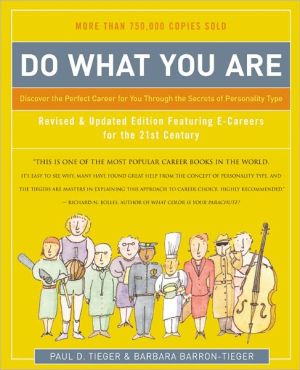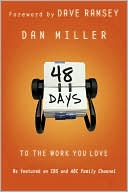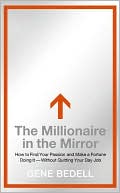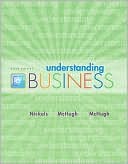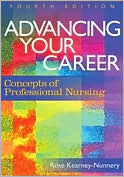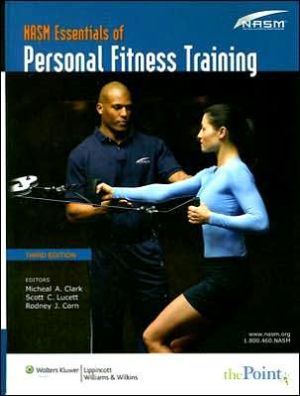How to Start a Home-Based Writing Business
Have you ever dreamed of starting your own home-based writing business? Have you been hesitant to put your plans into action? This comprehensive guide contains all the necessary tools and strategies you need to successfully launch and grow your own business. Author Lucy Parker, a successful home-based writer, shares her experiences and down-to-earth advice on every aspect of setting up and running a thriving home-based business. She shows you how to develop a business plan, estimate your...
Search in google:
This guide provides information on how to start you own home-based writing business. Internet Book Watch From putting plans into action to using writing skills to invite business, this provides a blend of basic business savvy and advice specific to a writer's tools and talents. Chapters are especially effective in covering bidding processes, assessment of competition, and start-up cost control.
\ \ \ \ \ Chapter One\ \ \ GETTING STARTED AS A HOME BASED WRITER\ \ \ "Until you make it, fake it." That's what they say. "Until you make it, fake it." There is no other way.\ \ \ I don't mean "buy a new Mercedes" If the payments would come hard. I don't mean "put three-hundred-dollar dresses On your MasterCard."\ \ \ But fake a little confidence— Just fake the way you feel. 'Cause fakin' now will teach you how And soon it will be real.\ \ \ "UNTIL YOU MAKE IT, FAKE IT"\ \ \ No, this lyric never made it to the "top forty." But composing it and other topical ditties kept me in touch with writing as I drove the southern California freeways, tape recorder in hand, calling on my printing sales clients during the early 1980s. Supporting myself as an outside sales rep was part of my plan to make the transition from higher education public relations to freelance writing and graphic designing. And it worked.\ This particular selection from my heretofore unpublished and unproduced "Sales Success Song Cycle" may help you, too, as you step off the diving board into your own home-based writing business.\ Let me share a secret: At first, it doesn't seem real. You may even feel as though you are pretending to be in business—an imposter "playing office" with a toy telephone and a kiddie computer. That's OK. Don't worry about it. "Until you make it, fake it."\ Acting like a professional will set you apart from equally talented writers who, inreality, are between jobs—who don't have a compelling vision of themselves as self-employed and won't be there in two years when a client wants them to rewrite an early project.\ You will be there to handle such an assignment! By that time, you will have become a real entrepreneur—part of the vast small-business backbone of every free economy. You will be a real businessperson with real clients, real jobs to do, real cash flow, real equipment that probably needs upgrading, and dreams that are really coming true.\ I did it—and so can you!\ \ \ WHAT THIS BOOK OFFERS—AND ASSUMES\ \ \ Before we go any further, I want to make it clear that this is a book about commercial writing, business writing, nonfiction writing. It is a book about obtaining practical, often unglamorous assignments that can pay the bills. The glamorous part is being your own boss, earning a living at a craft you enjoy—that's what I assume you're looking for as you read these pages.\ Throughout the book, I have used many examples from my own experience and from the careers of writer friends. But what if you can't relate to these examples? After all, every writer is different. To broaden my research and to help you visualize yourself as a home-based writer, I have provided profiles of ten successful professionals—one at the end of each chapter.\ The ten writers represent a variety of specialties. A few have gone the traditional magazine article and nonfiction book route, but most earn their living from what I describe later on as "the hidden (or corporate) market." They come from a wide geographic region. Some are older, some are younger—although the kind of writing discussed in this book normally requires some staff experience, or at least a little life experience. If you can go directly from being a full-time student to being a full-time home-based business writer, more power to you!\ \ \ HOW I GOT STARTED AS A HOME-BASED ENTREPRENEUR\ \ \ No one in my immediate family had ever worked for anything but large employers—the Chicago school system, United States Steel, the U.S. Department of Agriculture, the Navy—that kind of employer, that size. It was my former husband's Naval career that brought us to California from the Midwest, and I went to work for the state university system. It was all I knew—benefits, a monthly paycheck, security in numbers.\ If you have a relative who is self-employed, count yourself lucky and start soaking up small-business ambience in Cousin Harry's restaurant or Aunt Betty's beauty salon. Virtually my entire career after graduating from Northwestern University's Medill School of Journalism had been spent in public relations, publications, and grant writing for public and private colleges and universities. Not only did I know nothing about self-employment, I knew nothing about business itself.\ In 1975 my experience as the public relations representative and journalism instructor on a semester-long study voyage to Europe, the Middle East, Africa, South America, and the Caribbean forever changed my typically academic, out-of-touch view of business. Until that mind-blowing three months at sea, I had irrationally (but conveniently) conceived of the business world as being overwhelming on the one hand and unworthy of my efforts on the other. Seeing street vendors in every culture we visited—so like the swapmeet culture then emerging in the United States—demolished my ivory tower perspective. It made me understand that business-the exchange of goods and services—is a basic endeavor that sustains and will always be part of human life.\ As my new understanding evolved, I began to dream of freelancing and controlling my own schedule. In 1978 I sold an op-ed piece to the Los Angeles Times about a liberated single mom (me) taking a part-time vacation to see how staying home would feel (heavenly).\ "Perhaps our work-crazy American system, even with its incredible wealth, just can't allow institutional time to become human time," I concluded. "We single mothers, juggling the demands on us, may be only the tip of an iceberg of discontent—the frenzied fringe of an entire generation that is frantic to earn more and more money looking for Mr. Goodlife.... In my own case, it's taken me [years] to catch on, but finally I stopped racing long enough to smell my rosebush this morning."\ Leaving my college job in 1980, I made a 180-degree turn to outside commissioned sales. As a printing buyer in higher education, I had watched scores of sales reps make their pitch and thought: "I could do that." I knew the move was transitional, but I decided that outside sales would teach me about the business world and force me to structure my time.\ Well, I still struggle with structuring my time (Charles Hobbs's Time Power tapes and my Day-Timer have helped). But I did learn to feel at home in both large and small corporations, and I did achieve an understanding of what business is about. I built a printing clientele largely through networking in professional organizations, and I helped my clients by designing and editing for them on the side. When I made the leap to full-time freelancing in 1986, my printing clients provided a base.\ While sadly many of my corporate friends have learned that in a downsizing economy, their professional loyalty does not guarantee them job security, I'm glad I have learned to scramble and survive. In addition to providing me with financial adaptability during the recession of the late 1980s, my home-based business also improved my sense of physical well-being. For years, in high-pressure public relations work and occasionally during a printing sales crisis, I got terrible headaches. I couldn't help noticing that periods of extra stress were often followed by periods of pain. In the ten years I have been self-employed, I've experienced lots of stressful deadlines, but almost no headaches. I'm not sure why. I guess I just feel more comfortable with stress I can control.\ In 1994, just as the first edition of this book was being published, family commitments brought me to central Florida from southern California to care for an elderly relative—and again my business served me well. Since home-based writing is not only adaptable, but portable, I was soon able to find clients in Tampa Bay. In 1996, with more time available after my relative's death, I have adapted to new market needs, refocusing part of my business on Webpage design. And I've also undertaken a long-deferred fiction project that may or may not bring me money but has already brought me great satisfaction.\ So, as you can see, a home-based writing business is nothing like the nine-to-five job you come to, go away from, and eventually leave—something separate from your "real life." It is your real life. At least, it has become mine.\ \ \ WHY WORK AT HOME?\ \ \ Why not work at home? Especially if you can earn a good living, be your own boss, and work on projects you enjoy. Today, in the words of management expert Tom Peters, "We're in the midst of an earthshaking change in the way business gets done." In 1900, Peters reports, 50 percent of U.S. workers were self-employed. With the rise of giant corporations, that number had shrunk to 7 percent by 1977. You are part of the small-business revival that is slowly reversing that trend. By 1993, Peters states, 13 percent of our workforce was self-employed.\ And the number of people working at home is rising, too. According to Link Resources, which tracks home workers, forty million people (both self-employed and those working for others) were working at home in 1996, up sharply during this decade and still climbing. Business Home magazine predicts that there will be fifty-five million "homeworking households" by the year 2000.\ About twenty-five million of the forty million home workers are home-based entrepreneurs, says Cat Volkmann, head of the Tampa Bay Chapter of the American Association of Home Based Businesses and a national leader in AAHBB, which is headquartered in Rockville, MD. Cat and her husband, Tom, operate The TomCat Connection. They are "In the Business to Promote Business", which they do through networking, education, resources, and building clients' images on paper and on the Web. She says that research done by the association verifies Link's numbers.\ "Link Resources estimates that 8,000 home-based businesses are started every day in the United States," Cat points out, "and these businesses have tremendous staying-power. After five years, our research indicates that only one in five home-based businesses has failed. Compare that with figures from the United States Small Business Administration which shows that only one in five small businesses lasts five years." Cat cites a nine-year study of home-based businesses by the University of Wisconsin that has also found better-than-average survival.\ "We just don't quit," she says. "We have such stamina and drive because everything is riding on it." Cat and Tom are a case in point. A nurse-turned-writer, she opened, her first home-based business, Health Education Associates, in 1977. Tom, now doing graphic design, opened a home-based consulting business in mechanical design engineering in 1968. The two formed TomCat in 1986.\ Computers, faxes, modems, E-mail, and online services have made home-based business incredibly convenient, especially for writers. Today a well-run home office is every bit as professional as a cubicle in some high-rise business center—and a lot handier for you. But there's still another reason to work at home. If you can avoid the pitfalls of home business (see Tips for Managing Your Business and Yourself, in Chapter Ten), your costs will be significantly less than those of public relations, advertising, and marketing firms, which must add office rent, utilities, and employee benefits to the basic expenses of equipment, supplies, and marketing. That makes you an economical alternative—exactly what clients are looking for.\ The layoffs and downsizing of the nineties have caused both pain and pleasure for creative workers. Companies and organizations everywhere are seeking to meet their writing needs without maintaining staff members who draw salaries whether they're busy or not, and whose skills may not be well suited for every project.\ The downside of this situation is well summarized by the following example. One successful writer I interviewed for this book told me about a friend who had been working full-time for a national publishing firm, producing a newsletter. The company abruptly laid the editor off and, in less than a week, hired the dazed woman back to continue putting out the newsletter—for less money and with no benefits. She accepted, thinking it might be the start of a freelance career, but with no preparation for freelancing and a nearly full-time job producing the newsletter, she could not find time to organize or market her business.\ With the help of this book and your own research and planning, you can avoid such a trap and tap into what I call "the hidden market" for writing: businesses, government agencies, retailers, restaurants, hotels, hospitals, professional groups, universities, and many other local clients who buy services like yours in every community.\ Of course, these clients could and often do meet their needs by hiring an advertising, public relations, marketing, or design agency—but they can't do it at the prices you can charge working out of your home—although, as we'll see in Chapter Nine, really lowballing your prices cannot lead to long-term success.\ With effective marketing and a professional approach, you can gain important and lucrative jobs from very large clients—sometimes snatching them away from well-established agencies and sometimes serving as an agency subcontractor. I've done both—and so can you!\ \ \ WHAT KINDS OF WRITING JOBS ARE WE TALKING ABOUT?\ \ \ Throughout this book, we are talking about assignments you can realistically expect to receive as a new freelance writer—assignments that are available to you in most communities and that can add up to a full-time income.\ We're talking about such meat-and-potatoes jobs as producing newsletters, product sheets and brochures; creating press releases and press kits, ad copy, speeches, and company magazine articles. We're talking about developing instructional and technical manuals, creating audiovisual and video scripts, editing, even writing resumes. In other words, this book will teach you how to be your own boss while doing what other writers do in salaried positions.\ Such writing is often called "business" or "corporate" writing, and it's almost always done as "work-for-hire." You produce a specific piece of work and your client owns all rights to it.\ As you read this, new kinds of writing are emerging at the heart of the electronic/online revolution. No one today can fully predict the future of this evolving technology, but everyone who cares about communications can grasp the significance of the digital buzz-phrase: "Content is King!" Some of this writing is straight work-for-hire. Some is entrepreneurial, with the writer putting material online and requiring payment to access it or selling space to online advertisers. Some is freelance, with the author selling agreed-upon rights-although obtaining appropriate compensation for electronic rights has become a hotly contested issue with the National Writers Union, the American Society of Journalists and Authors, and other advocate groups.\ Whatever form this new communication takes and however it is compensated, writers are needed and opportunities are plentiful for those who develop an understanding of new interactive media.\ This book also talks about traditional freelance article writing—but not for Esquire or Cosmopolitan. Rather, we're looking at writing for newspapers, newsletters, and regional or specialized magazines, including a vast array of trade journals—publications that won't be found at a supermarket checkout stand, but where opportunities abound.\ Similarly, opportunities exist writing nonfiction books such as how-to's and guides. These categories are by far the easiest to break into. But be forewarned: Unless you are paid for your work up front—the way a manual writer, textbook writer, or ghostwriter might be—writing books on a royalty basis is rarely profitable until you have several steady sellers in print. One writer who fits this description is Sylvia McNair, a seventy-two-year-old travel writer who began her writing career at fifty-seven—a wonderful encouragement to other late bloomers. (You'll find a profile of McNair at the end of Chapter Eight.)\ McNair and two other writers profiled in this book, Steve Morrill and Judith Broadhurst, work primarily in these traditional areas—and many business writers find it worthwhile to seek freelance assignments along with their work-for-hire jobs. However, because so many books and articles are already available on how to succeed writing articles and nonfiction books, this book gives much greater emphasis to marketing and selling in the work-for-hire world. Entering this world remains a mystery to those who have not studied its techniques, and, even more to the point, this world is readily available to beginning professionals in every part of the country, as well as online.\ A business writer friend, for example, doing Internet research for her vacation in France, received an unexpected online assignment to publicize a French inn to American travelers. Jack Fehr, a Vermont writer profiled at the end of this chapter, responded to an ad for freelance financial writers in one of CompuServe's communications forums and received a series of newsletter assignments from a publisher in Boston. Technical writing/design broker Joy White of California, profiled in Chapter Two, joined an online forum called Military Brats of America because she grew up as an Army brat. Much to her surprise, the forum founder turned out to be a New York designer who was looking for a West Coast supplier where he could refer business. White was more than happy to comply.\ Such connections become more common every day.\ Being your own boss is a major achievement—the goal of a lifetime for many people. But if your dreams go further, keep those dreams! One of the benefits of being a home-based freelancer is the opportunity to do personal creative projects—and as a businessperson, you'll make every creative project profitable if you can.\ It's true that some writers support themselves at home writing novels, movie scripts, or articles for national magazines. Not many, but some. Aim high, and while you grow, let meat-and-potatoes jobs pay the bills.\ Perhaps your dreams are more entrepreneurial: You'd like a high-profit home business writing and producing your own products for sale to retailers, business buyers, or consumers. Examples might be a line of greeting cards, a subscription newsletter, a series of independently published books. Such ventures require additional capital but can significantly increase your return on money and time invested. Many of the business practices you'll learn in this book will help you if you decide to go in that direction.\ \ \ THE CASE FOR COMBINING WRITING AND DESIGN\ \ \ In addition to describing the kinds of jobs that are available, this book explains how to set up your business and your office, how to market and sell, and what to charge—with worksheets to help you develop and evaluate your plans. I started my freelance career when the home-based business was less recognized as a significant entrepreneurial option. But because of recent trends toward downsizing and hiring freelancers, you couldn't be starting your business at a better time. You have more credibility. You have better resources, with instant online research and E-mail access to your clients. And best of all, you have more demand for your work.\ I am assuming that you already know your craft—how to write—although the next section of this chapter offers suggestions for strengthening your skills. At the same time, however, I invite you to consider adding desktop publishing and/or Webpage design to your arsenal, if you have the talent and interest. Even more important, I urge you to offer these services to your clients from the start by building relationships with other freelancers.\ Desktop publishing is an inspired marketing term, but something of a misnomer. It's not really publishing in the sense that a book, magazine, or software publisher produces and markets a product. For the purposes of this workbook, I define desktop publishing as the process of combining text and graphics into page layouts on a computer screen and outputting the pages on an imaging system so that they are ready for reproduction.\ In my opinion, the access that we have to affordable professional typesetting and page layout tools through the use of a personal computer qualifies as one of the most important developments in the history of the printed word. Many of us in the communications field have practiced this new technology, learned the rules, and can now fly with unprecedented freedom and creativity.\ Unfortunately, desktop publishing has been oversold. "Just buy our products," say the ads, "and you can produce your own instant newsletters and brochures!" Like good writing, good design takes talent, skill, and experience—not just good hardware and software. That's why we are in business!\ Since its introduction in the mid-eighties, desktop publishing software has revolutionized prepress print production. More recently, software for producing slides and overhead transparencies and multimedia software, which combines video and sound with text and graphics, have launched similar revolutions in the areas of spoken and audiovisual presentations. Even more recently, the exploding popularity of the World Wide Web has created entirely new opportunities to combine interactive writing, images, and sound. While this work requires some programming skills, Web authoring software is making it ever more accessible. Thus, for virtually every form of visual communication, planning, writing, and designing content have become a nearly seamless process. Using today's software, it's just another program on the computer to move from text to finished graphics—whether the final product will be printed material, an audiovisual presentation, or a Website.\ As a result of this new technology, more and more clients expect to make a one-stop purchase—and if you can offer a one-stop service, you will get more business. It's as simple as that. By dealing with only one vendor—you—your buyer can save time and money.\ Being able to handle all phases of the writing and production process is also helpful when clients want to share their files. For example, since I do both writing and desktop publishing, many clients have given me text files, using either disk or modem, and my task is to turn the text into a newsletter or brochure. Usually, editing and writing headlines and captions are part of the job. For one major corporation, I wrote short articles and sent them via modem to their staff designer. (Now, such a job would be delivered by E-mail.)\ Today both writers and graphic designers must be computer literate. But that doesn't mean you should try to sell both writing and desktop or Webpage design unless you can do both well. For several years now, the business world has been bandying about a new buzzword: virtual corporations. Virtual corporations are temporary networks of companies and individuals brought together for a specific project. When market opportunities appear, companies are finding it faster and less costly to partner with other businesses than to develop additional expertise in-house.\ This is what home-based creative professionals have been doing all along. When we have a project that requires special skills, we draw on a group of trusted colleagues.\ It's kind of neat to be in the vanguard of American business practice. Maybe some home-based writers and designers should be lecturing to Harvard M.B.A. candidates.\ \ \ RESOURCES FOR GAINING SKILLS YOU DON'T NOW HAVE\ \ \ If you want to become a professional writer but are not at that level now, accept the fact that gaining new skills will take serious effort and time. We are not talking about going back to college to earn a new degree or spending years learning on the job, but we are talking about steady concentration, practice, evaluation, and revision—a solid learning process.\ There are ways to short-circuit traditional methods of mastering a craft to build the sense of authority you need in order to offer your services to the public. One is to focus very specifically on learning how to write only the type of thing that you most want to sell—or that is most often called for by the clients you serve. As you scan the many types of writing discussed in Chapter Three, ask yourself which of these you might learn to do. Once your skills in that area reach a professional level, you can concentrate on adding others.\ I have a degree in journalism, I've taken endless workshops and seminars, and I've racked up some thirty years of experience as a writer, but there are still areas of writing—profitable ones—that I pass up when they are offered to me because I don't feel I do them well. Offering for sale only what you do well is professional. Offering to write "anything" and charging your clients for it is amateur behavior at best.\ \ \ Classes and workshops\ \ \ Looking for classes in writing? Try community colleges and evening adult schools first. Costs are minimal, and over a semester's time you will become familiar with the material, even if the instructor is not commercially oriented. You can also take a class to brush up on basics, such as grammar or computer techniques.\ Your computer instructor will be happy to advise you on what equipment to buy. Also read computer catalogs and magazines. The only thing you must never do as a would-be home-based writer is show up at a computer store with your checkbook open, relying on the salesperson to equip you—unless, of course, you want to get rid of excess cash.\ Once you've mastered the basics, advanced courses at a local professional school or university might be your next step. In the meantime, watch for short-term workshops and seminars. Some are priced in the Fortune 500 stratosphere, but others are more affordable. If you are not on mailing lists for such offerings, check with your library or computer score. And don't be too shy to ask professionals in the field—advertising copywriters, public relations practitioners, corporate communicators. These worthy souls get seminar mailings by the bushel and should be only too glad to pass them on to you.\ \ \ Personal coaching and observation\ \ \ Personal coaching and observation are like a self-administered internship. A local, noncompeting professional may let you observe for free and might even let you help in her office if you are willing to commit serious time to the project. This can be a good way to get feedback from a professional on your early efforts.\ For an ongoing coaching arrangement, however, expect to pay a reasonable consulting fee. It's an uncommon, but totally natural way for someone in your situation to learn—by spending time, one-on-one, with someone who knows a lot about what you are studying. Approach people who are active in professional associations—a good indication of their desire to help others.\ A variant on this idea, in the graphics area, is to visit places where the work you are interested in is being done. List the kinds of vendors you may be using—such as desktop publishing service bureaus, graphic film shops, lettershops, commercial printers, Website providers—and arrange to tour typical establishments. Some firms will give you a tour just because you ask for it. If that doesn't work, perhaps a regular customer could arrange for you to visit. To help understand the process, ask to be shown the steps a job takes as it goes through the shop. Ask to be shown examples of good and bad work and have the differences between the two explained. Ask what you, as a graphic designer, can do to make it easier for the vendor to serve you and to save money.\ \ \ Volunteer projects\ \ \ Get your feet wet as soon as possible by doing volunteer writing projects. You can learn much more from planning and completing a real project than from doing a made-up one—and you don't need professional-level skills to volunteer. Bob Brenner, a writer and publisher profiled at the end of Chapter Ten, used this technique. As a retired military officer with an engineering background, he volunteered for projects to teach himself to write and again served as a volunteer to learn desktop publishing.\ Your church, club, or fraternal organization will be grateful for whatever you come up with. Then call on the network of professionals you are establishing to critique your work and find out how you could have made it better. Save your best volunteer efforts to start your personal sample file.\ \ \ Reading and sample collecting\ \ \ Read. Read. Read. The Bibliography in this book will start you off. Rely on periodicals to give you the "feel" of the specialty you want to master, reveal current trends, and point out major players. Rely on books to give you solid historical and technical grounding. Ask writers you respect what books and periodicals they find useful.\ From the moment you decide to master your new skill, start collecting samples of work you like. As you gain more theory and experience, ask yourself why a particular piece works. Sometimes it's a good idea to collect samples of work you don't like, too. You can't help but hone your skills if you keep your eyes wide open.\ (Continues...)
ACKNOWLEDGMENTSxiv INTRODUCTIONxv 1 GETTING STARTED AS A HOME-BASED WRITER1 "Until You Make It, Fake It"1 What This Book Offers—and Assumes2 How I Got Started as a Home-Based Entrepreneur3 Why Work at Home?4 What Kinds of Writing Jobs Are We Talking About?6 The Case for Combining Writing and Design8 Resources for Gaining Skills You Don't Now Have10 Success Worksheet One Expand your capabilities12 What's Your Next Step? Ways to Get Started13 Success Worksheet Two Have a transition plan15 Life as a Home-Based Freelancer16 Success Worksheet Three Understand your motivations16 Getting Support on the Home Front18 Success Worksheet Four Make sure your players want to be on the team18 How to Use the Worksheets to Build Your Business Plan19 Profile: Jack Fehr Escaping to a New Life22 2 WHAT WILL YOU DO AND FOR WHOM? Building on Your Strengths and Teaming with Other Professionals25 Why Define Yourself?25 My Search for aBusiness Identity26 Finding Your Business Focus28 Start with a Reality Check30 Success Worksheet Five Build on your past skills and experience30 Setting Up Relationships with Other Suppliers and Associates31 Success Worksheet Six Find reliable associates31 Success Worksheet Seven Increase your business through joint ventures, but guard against potential34 Success Worksheet Eight Set up joint work agreements37 Profile: Joy Mieko White Meeting a Need38 3 WHERE THE WORK IS Key Writing Products and Clients41 Writers and the Online Revolution41 What is the "Hidden Market"?43 Sixty Key Assignments for Home-Based Writers44 Zero In on Your Areas of Specialization63 Success Worksheet Nine Define your niche63 Who Buys the Meat-and-Potatoes Jobs?64 Sixty Key Writing Clients65 Writing-Related Agencies67 Matching Jobs and Clients68 Success Worksheet Ten Identify your market68 Profile: Donna Donovan Finding Yourself Through Your Business70 4 MAKING YOUR BUSINESS LEGAL73 The Basics of Setting Up a Business73 Sole Proprietorships74 Partnerships76 Corporations79 Naming Your Business79 Fictitious Name Statements81 Trademarks82 Business Licenses and Zoning83 Seller's Permits84 Success Worksheet Eleven Set yourself up right85 Profile: Alan S Horowitz Creating Business Opportunities86 5 OFFICE SPACE AND EQUIPMENT89 What Will You Need to Get Started?89 Space for Your Home Office90 Basic Space Needs90 Space Factors to Consider92 Success Worksheet Twelve Plan an office that suits you97 Determining Your Equipment Needs99 Success Worksheet Thirteen Buy only the equipment you need105 Profile: Jan Franck Positioning for Profit106 6 COMPUTERS, ONLINE SERVICES, AND ANOTHER LOOK AT START-UP COSTS109 Selecting Your Computer109 Success Worksheet Fourteen Determine your computing needs111 Computer Peripherals and Accessories113 Success Worksheet Fifteen Plan your computer system120 Software for Writers123 Success Worksheet Sixteen The right software can make you more productive125 Computer Shopping128 Success Worksheet Seventeen When buying computer hardware and software, buy smart130 Using Online Services133 Analyzing Your Start-up Costs134 Success Worksheet Eighteen Conserve cash135 Start-Up Costs vs. Funds Available136 Success Worksheet Nineteen Balance your needs against your resources137 Profile: Stephen Morrill Diversifying Pays Off140 7 MARKETING YOUR SERVICES143 Marketing Makes the Difference143 Marketing Magazine Articles145 Marketing and Selling—an Entrepreneurial Example147 What Can Marketing Research Do for You?153 Where and How to Get Marketing Information154 Marketing Strategies and Positioning156 Success Worksheet Twenty Understand your market and position yourself strategically157 Determining and Presenting Your Image159 Publicizing Yourself and Your Services161 Success Worksheet Twenty-One Build your own publicity toolkit and keep it current165 Advertising Your Services165 Success Worksheet Twenty-Two Advertise your services for maximum impact168 Marketing Yourself Online169 Success Worksheet Twenty-Three Include online marketing in your plan174 Keeping Records to Evaluate and Update Your Marketing Plan175 Success Worksheet Twenty-Four Evaluate your marketing regularly175 Profile: Ilene Schneider Combining Business and Family177 8 SELLING YOUR SERVICES179 Prospects are Just People179 The Benefits of Selling—and of Sales Training180 The Value of a Prospect List181 Prospect Information Form Qualifying Prospects185 Sources of Prospects185 Success Worksheet Twenty-Five Keep building your prospect list190 Telemarketing, E-mailing, and Mailing191 Success Worksheet Twenty-Six Make every prospecting contact effective192 Organizing Your Database and Managing Your Contacts194 Follow-up Techniques195 Success Worksheet Twenty-Seven Good follow-up turns prospects into clients200 The Steps Toward Buying202 Making a Sales Presentation203 Keeping Your Prospect/Client List Active208 Soliciting Additional Business209 Profile: Sylvia McNair Building on Experience209 9 HOW TO CHARGE AND HOW TO COLLECT213 Deciding What to Charge213 What Do Others Charge?213 Deciding How to Price Your Services216 How to Arrive at Your Basic Hourly Rate221 Finding Your Profit Zone224 The Psychology of Setting a Price224 Success Worksheet Twenty-Eight Know what your basic hourly rate must be and earn it five hours a day226 The Bidding and Negotiating Process229 Estimating Form235 Getting Paid237 Bartering241 Success Worksheet Twenty-Nine Estimate accurately, bill promptly, and make sure all your costs are242 Profile: Judith Broadhurst Succeeding and Moving On244 10 TIPS FOR MANAGING YOUR BUSINESS (AND YOURSELF) AND WRITING YOUR BUSINESS PLAN247 What Else Is Involved in Running Your Business?247 Legal Issues248 Issues Concerning Employees250 Taxes253 Cash Flow, Income Projection, and other Financial Issues256 Policies and Procedures258 Record Keeping260 Job Control Form262 Master Job Log Form264 Purchasing and Inventory Control265 Maintenance of Equipment and Facilities266 Computer System Administration and Security267 Success Worksheet Thirty Systems solve management problems268 Setting Goals and Managing Time Within Your Management Style272 Success Worksheet Thirty-One Identify your management style and work with it for success275 Your Business and Your Life277 Success Worksheet Thirty-Two Manage yourself281 Writing Your Business Plan282 Profile: Robert C Brenner Riding the Wave of "Change"283 BIBLIOGRAPHY287 SOURCE DIRECTORY299 INDEX309 ABOUT THE AUTHOR317
\ From putting plans into action to using writing skills to invite business, this provides a blend of basic business savvy and advice specific to a writer's tools and talents. Chapters are especially effective in covering bidding processes, assessment of competition, and start-up cost control.\ \

